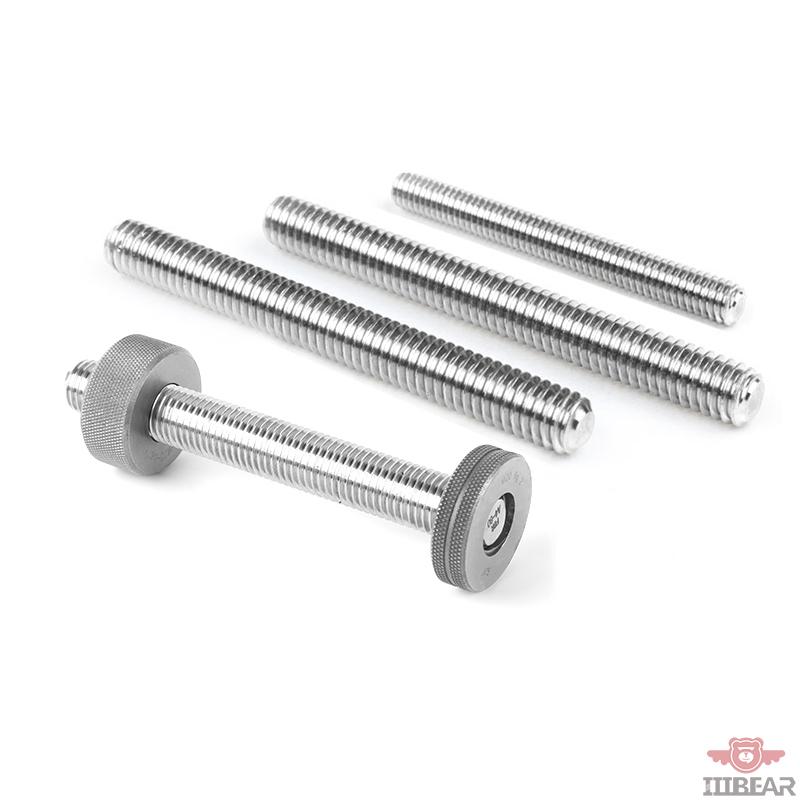Threaded rods, also known as stud rods or all-thread rods, are versatile fasteners widely used in construction, manufacturing, and DIY projects. These rods feature threading along their entire length, making them ideal for applications requiring adjustable fastening, structural support, or load-bearing capabilities. In this guide, we’ll explore threaded rod specifications, common uses, and how to choose the right one for your needs.

What is a Threaded Rod?
A threaded rod is a long, straight metal bar with threading (helical ridges) along its entire length. It is typically made from materials such as carbon steel, stainless steel, or galvanized steel, each offering unique properties for different applications. Threaded rods are available in various diameters, lengths, and thread types, making them suitable for a wide range of industrial and commercial uses.
Key features of threaded rods include:
-
Material: Carbon steel (durable and cost-effective), stainless steel (corrosion-resistant), and galvanized steel (rust-resistant).
-
Diameter: Ranging from 1/4 inch to 2 inches or more, depending on the load requirements.
-
Length: Customizable lengths to suit specific project needs.
-
Thread Type: Unified National Coarse (UNC), Unified National Fine (UNF), or metric threads.
Common Applications of Threaded Rods
Threaded rods are used in a variety of scenarios, including:
1. Construction and Structural Support
Threaded rods are essential in construction for anchoring, bracing, and securing structural elements. For example, they are used to connect steel beams, reinforce concrete structures, or suspend HVAC systems. Their adjustability and strength make them ideal for heavy-duty applications.
2. Plumbing and Electrical Installations
In plumbing, threaded rods are used to hang pipes, while in electrical installations, they secure conduit systems. Their corrosion-resistant variants (e.g., stainless steel) are particularly useful in damp or outdoor environments.
3. Manufacturing and Machinery
Threaded rods play a critical role in assembling machinery, securing components, and providing adjustable mounting solutions. Their precision threading ensures a secure fit, even under high vibration or load conditions.
4. DIY and Home Improvement Projects
From building shelves to creating custom furniture, threaded rods are a favorite among DIY enthusiasts. Their versatility and ease of use make them a go-to solution for creative projects.
How to Choose the Right Threaded Rod
Selecting the right threaded rod involves considering several factors, including material, diameter, length, and thread type. Here’s a step-by-step guide:
1. Determine the Material
-
Carbon Steel: Ideal for general-purpose applications where cost-effectiveness is a priority.
-
Stainless Steel: Best for environments exposed to moisture, chemicals, or extreme temperatures.
-
Galvanized Steel: Offers rust resistance, making it suitable for outdoor use.
2. Choose the Correct Diameter
The diameter of the threaded rod should match the load requirements of your project. For example, a 1/2-inch diameter rod is suitable for light-duty tasks, while a 1-inch or larger rod is needed for heavy-duty applications.
3. Select the Appropriate Length
Measure the required length carefully, ensuring the rod is long enough to accommodate nuts, washers, and other fasteners. Threaded rods can be cut to size if necessary.
4. Match the Thread Type
Ensure the thread type (UNC, UNF, or metric) matches the nuts and fasteners you plan to use. Using incompatible threads can lead to improper fastening and potential failure.
Installation Tips for Threaded Rods
Proper installation is crucial to ensure the stability and longevity of your project. Here are some tips:
-
Use the Right Tools: A wrench or spanner is essential for tightening nuts and securing the rod.
-
Apply Thread Locking Compound: For high-vibration environments, use a thread locker to prevent loosening.
-
Inspect for Damage: Before installation, check the rod for any defects or damage that could compromise its strength.
Conclusion
Threaded rods are indispensable components in construction, manufacturing, and DIY projects. By understanding their specifications, applications, and selection criteria, you can choose the right threaded rod for your needs. Whether you’re reinforcing a structure, assembling machinery, or tackling a home improvement project, threaded rods offer the strength and versatility required to get the job done.

